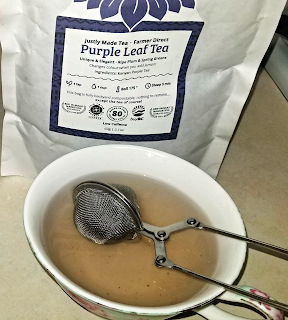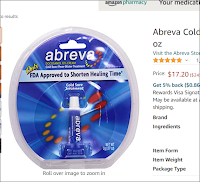Every time I have one of my regular infusions, I have to have a blood draw to test levels of ... whatever in my body. Most times, everything is fine and I sail right from the lab test and into an infusion chair. Every now and then, one of the levels of... whatever is high or low or something, and the nurses will check with my doctor. The doctor will give the go-ahead for my having the infusion. Usually.
The last time I went in for my scheduled infusion, the nurses called the doctor and he did not give the go-ahead.
What???
 |
| Less than 8 bucks for this |
I was a little puzzled but I didn't get too shook up until the nurse mentioned that the problem was with my kidney function.
Oh, please, Lord, not the kidneys.
I went home and stressed myself to prayer, tears, and insomnia. I worried about my weight (I've put on a few pounds lately), and I worried about not drinking quite enough water. I worried about everything.
I was in a higher than usual state of stress and anxiety all the way up to my appointment with the doctor. I went and had the labs done, then had to wait another hour until time for the appointment with my doctor.
 |
| $7.99 on Amazon |
When the doctor came in and saw how tense I was, I think he was confused but he's probably used to me being weird. He immediately let me know that my labs looked good and that he would have my infusion re-scheduled quickly. He said that there had been a problem showing up with my liver on the day the nurse had called him from infusion, but it was fine now. He said that I had probably had some kind of viral infection that had cleared itself up in the meantime.
Well. Okay.
Not my kidneys, then. Oh, thank you, Jesus. what a relief. Whew!
 |
| Tasty but so tangy |
 |
| healthy but, ugh! |
But... my liver? What the heck? That explains why the nurse had casually asked about whether or not I was a drinker. If only she knew the sorrow of having lost an uncle and two exes to alcoholism. I might be many things but a drinker is not one of them...
I was relieved and kind of mad, then just relieved again. But I realize a need to step things up with my health. And, for once, I didn't just think about doing better, I've actually gotten into the game. I am about to turn 60 so if not now, when?
I now have one of those water bottles with the time markings on it. I empty that at minimum twice a day and sometimes more. I started getting out on the days I can and taking short walks - twice a day most days. I have cut back on creamy-sugared coffee I love and am drinking more tea - and not just tea but the healthiest I can find.
 |
| I can always smell leaves burning when I get to this block of homes |
Do I feel better? I don't know. I still struggle with fatigue. Contrary to what I've been told, walking is not helping to alleviate that. I do think that walking helps with my balance. I mean, I don't go walking on days when I feel off-balance, but my good days are better than ever. I've only tripped on the carpet a few times this week and I have not walked into door frames turning the corners.
 |
| This is the shady stretch & my favorite part |
 |
| If I make it to this point, I'm probably going to finish |
I have gotten used to following a couple of different routes that let me get in a good 15- to 20-minute walk. I try to go before it's hot out or when the day has cooled off. Since I am such an insomniac, this works well.
 |
| Let's hope this is true! |
There are days when I think I am addicted to the morning walk, then there are days when I have to fight my anxiety and depression to get out the door of my apartment.
Hopefully, I can keep this up. Hopefully, it will help with the weight and the moods. I did not walk yesterday. My fatigue kicked in big time. I couldn't sit up without feeling like my body was made of lead. Maybe one day, someone will come up with some cure for fatigue.
I think that maybe we sometimes need a good scare to motivate us. I wish I had had some kind of warning before I got this silly sarcoidosis. For now, though, I want to baby my kidneys. And getting my weight down is a good way to do that. Keep prayers going up for me, people.
Peace
--Free








































